第3章 交叉口通行能力(无信号、环形)
- 格式:pdf
- 大小:1.83 MB
- 文档页数:59
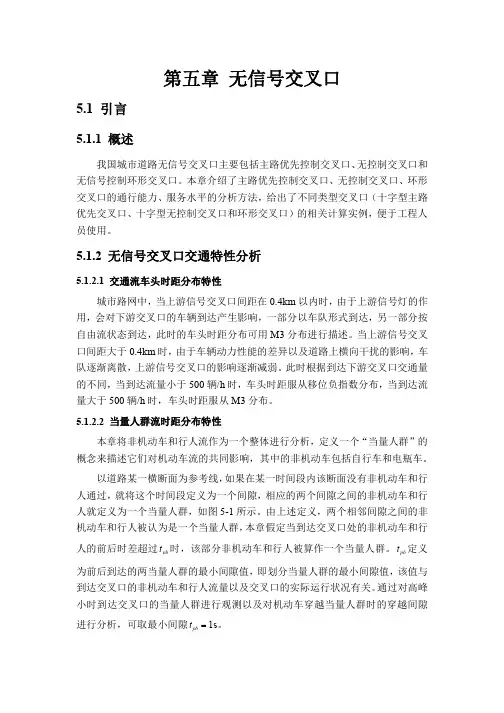
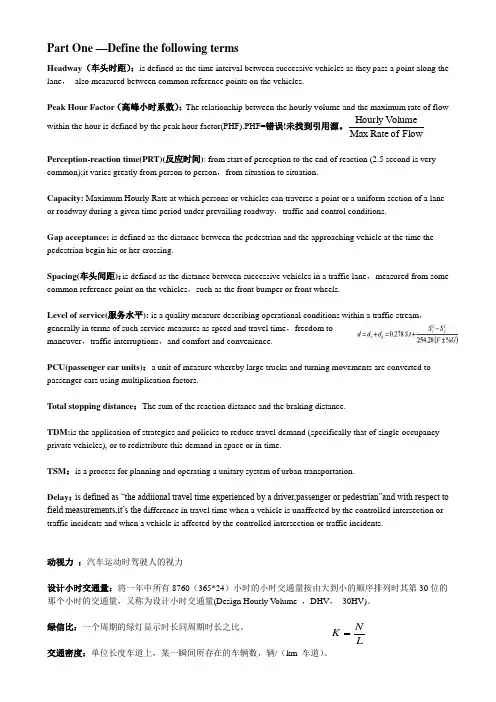
L NKPart One —Define the following termsHeadway (车头时距):is defined as the time interval between successive vehicles as they pass a point along the lane , also measured between common reference points on the vehicles.Peak Hour Factor (高峰小时系数):The relationship between the hourly volume and the maximum rate of flow within the hour is defined by the peak hour factor(PHF).PHF=错误!未找到引用源。
Flow of Rate Max Volume HourlyPerception-reaction time(PRT)(反应时间): from start of perception to the end of reaction (2.5 second is very common);it varies greatly from person to person ,from situation to situation.Capacity: Maximum Hourly Rate at which persons or vehicles can traverse a point or a uniform section of a lane or roadway during a given time period under prevailing roadway ,traffic and control conditions.Gap acceptance: is defined as the distance between the pedestrian and the approaching vehicle at the time the pedestrian begin his or her crossing.Spacing(车头间距):is defined as the distance between successive vehicles in a traffic lane , measured from some common reference point on the vehicles ,such as the front bumper or front wheels.Level of service(服务水平): is a quality measure describing operational conditions within a traffic stream ,generally in terms of such service measures as speed and travel time ,freedom tomaneuver ,traffic interruptions ,and comfort and convenience.PCU(passenger car units):a unit of measure whereby large trucks and turning movements are converted to passenger cars using multiplication factors.T otal stopping distance :The sum of the reaction distance and the braking distance.TDM:is the application of strategies and policies to reduce travel demand (specifically that of single-occupancy private vehicles), or to redistribute this demand in space or in time.TSM :is a process for planning and operating a unitary system of urban transportation.Delay :is defined as “the addiional travel time experienced by a driver,passenger or pedestrian”and with respect to field measurements,it’s the d ifference in travel time when a vehicle is unaffected by the controlled intersection or traffic incidents and when a vehicle is affected by the controlled intersection or traffic incidents.动视力 :汽车运动时驾驶人的视力设计小时交通量:将一年中所有8760(365*24)小时的小时交通量按由大到小的顺序排列时其第30位的那个小时的交通量,又称为设计小时交通量(Design Hourly V olume ,DHV , 30HV)。
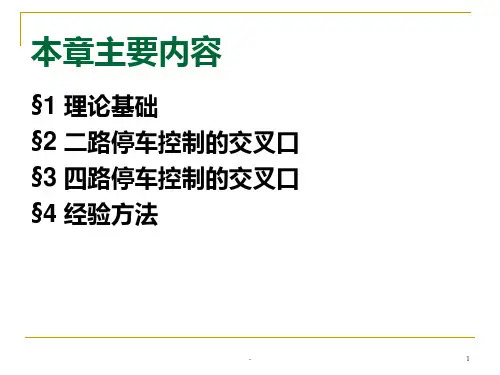
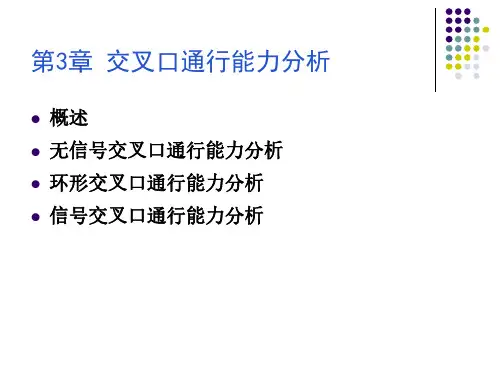
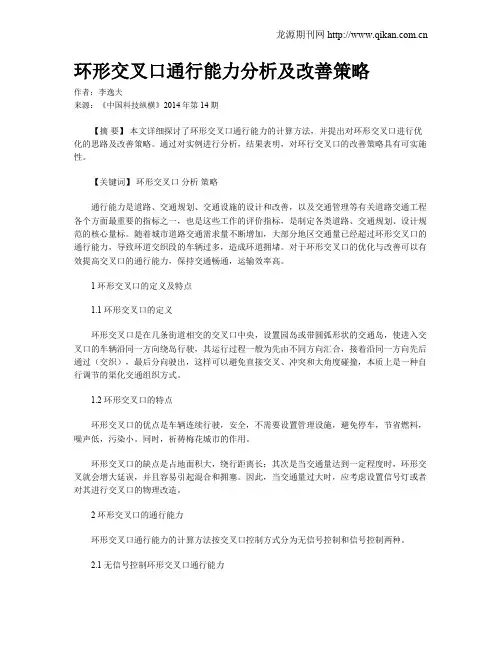

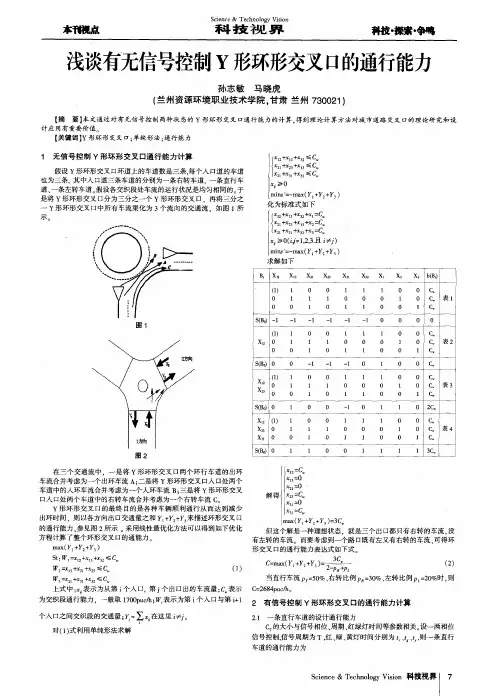
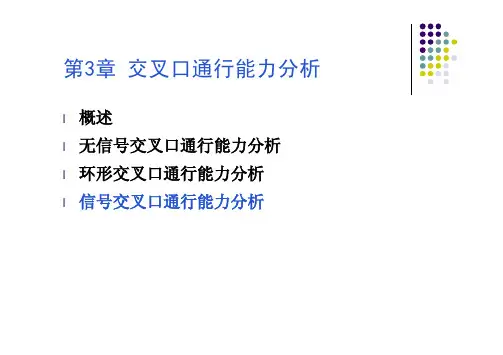
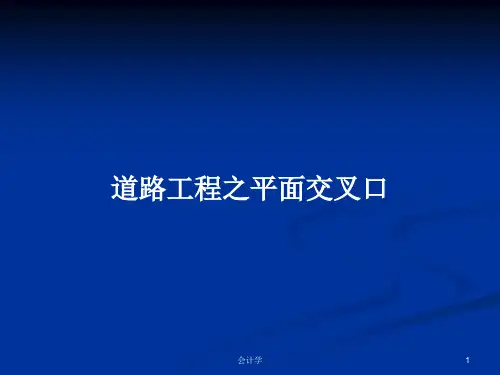
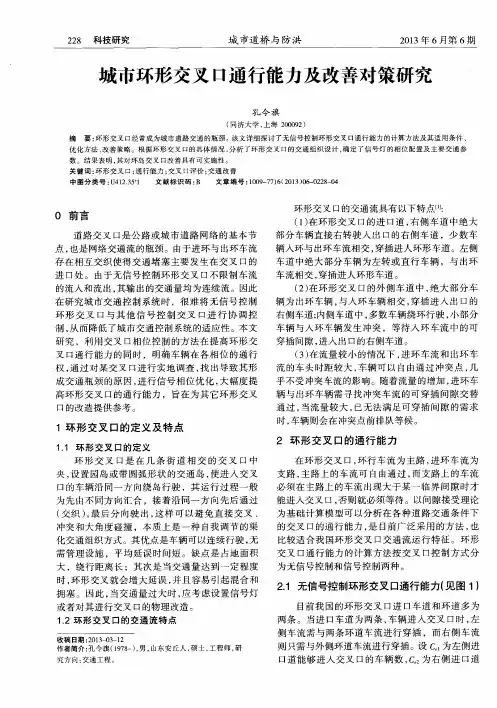
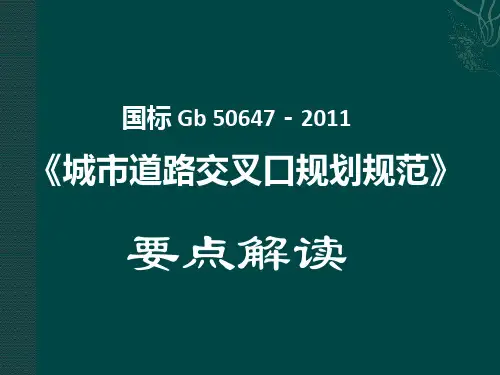
道路通行能力的计算方法土木073班陈雷 200711003227摘要:探讨道路路段的通行能力和交叉口的通行能力的计算方法;并提出了道路通行能力有待进一步研究的若干问题。
关键词: 通行能力;计算方法;交通规则;交通管理。
道路通行能力是指在特定的交通条件、道路条件及人为度量标准下单位时间能通过的最大交通量。
在道路建设和管理过程中,如何确定道路建设的合理规模及建设时间,如何科学地进行公路网规划、项目可行性研究、道路设计以及道路建设后评价,如何知道道路网的最优管理模式,都需要以道路通行能力系统研究的成果为依据。
本文对道路与交叉口的通行能力计算方法进行简单的探讨。
一、道路路段通行能力1、基本通行能力基本通行能力是指道路与交通处于理想情况下,每一条车道(或每一条道路) 在单位时间内能够通过的最大交通量。
作为理想的道路条件,主要是车道宽度应不小于3.65 m , 路旁的侧向余宽不小于1.75 m , 纵坡平缓并有开阔的视野、良好的平面线形和路面状况。
作为交通的理想条件, 主要是车辆组成单一的标准车型汽车, 在一条车道上以相同的速度,连续不断的行驶,各车辆之间保持与车速相适应的最小车头间隔, 且无任何方向的干扰。
在这样的情况下建立的车流计算模式所得出的最大交通量,即基本通行能力,其公式如下:其中: v ———行车速度(km/ h) ; t0车头最小时距(s) ; l0 ———车头最小间隔(m) ; lc ———车辆平均长度(m) ; la ———车辆间的安全间距(m) ; lz ———车辆的制动距离(m) ; lf ———司机在反应时间内车辆行驶的距离(m) ; l0 = lf + lz + la + lc。
2、可能通行能力计算可能通行能力Nk 是以基本通行能力为基础考虑到实际的道路和交通状况,确定其修正系数,再以此修正系数乘以前述的基本通行能力,即得实际道路、交通与一定环境条件下的可能通行能力。
影响通行能力不同因素的修正系数为:1)道路条件影响通行能力的因素很多, 一般考虑影响大的因素, 其修正系数有: ①车道宽度修正系数γ1 ;②侧向净空的修正系数γ2 ;③纵坡度修正系数γ3 ;④视距不足修正系数γ4 ;⑤沿途条件修正系数γ5 。